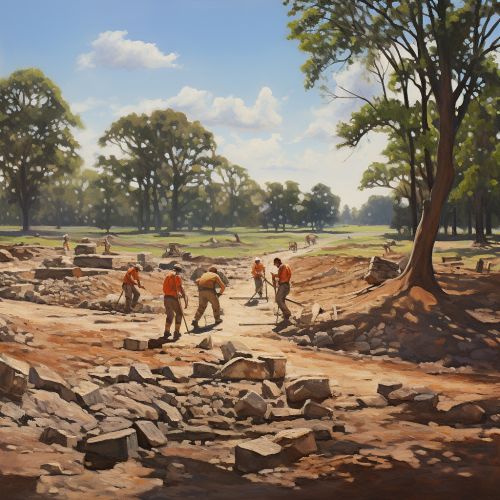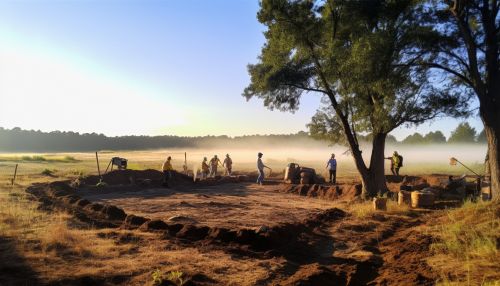Environmental Archaeology
Introduction
Environmental archaeology is the study of the long-term relationship between humans and their environments. This interdisciplinary field combines methods and theories from both archaeology and environmental sciences to understand how human societies have interacted with the natural world throughout history. The study of environmental archaeology is crucial for understanding past societies, as it provides insights into their subsistence strategies, economic systems, and cultural beliefs about nature.
History of Environmental Archaeology
The roots of environmental archaeology can be traced back to the early 20th century when archaeologists first began to consider the role of the environment in shaping human societies. However, it was not until the 1960s and 1970s that environmental archaeology emerged as a distinct field of study. This was largely due to the influence of the New Archaeology movement, which emphasized the importance of scientific methods and interdisciplinary approaches in archaeological research.
Methodologies in Environmental Archaeology
Environmental archaeologists employ a wide range of methodologies to study past human-environment interactions. These include:
Paleobotany
Paleobotanical studies involve the analysis of plant remains from archaeological sites. This can include macroscopic remains, such as seeds and wood, as well as microscopic remains, such as pollen and phytoliths. These studies can provide information about the plants that were used by past societies, as well as the types of environments in which they lived.
Zooarchaeology
Zooarchaeological studies involve the analysis of animal remains from archaeological sites. This can include bones, shells, and other hard parts, as well as soft tissues in rare cases. These studies can provide information about the animals that were used by past societies, as well as their hunting and fishing strategies.
Geoarchaeology
Geoarchaeological studies involve the analysis of the geological context of archaeological sites. This can include the study of soils, sediments, and landforms. These studies can provide information about the environments in which past societies lived, as well as the ways in which they modified these environments.
Archaeomalacology
Archaeomalacological studies involve the analysis of mollusc shells from archaeological sites. These studies can provide information about the environments in which past societies lived, as well as their use of marine resources.
Case Studies in Environmental Archaeology
Environmental archaeology has been used to study a wide range of past societies, from hunter-gatherers to complex civilizations. Here are a few examples:
The Neolithic Revolution
Environmental archaeologists have used paleobotanical and zooarchaeological evidence to study the Neolithic Revolution, the transition from hunting and gathering to agriculture that occurred in many parts of the world. This research has provided insights into the types of plants and animals that were domesticated, as well as the environmental conditions under which this occurred.
The Maya Civilization
Environmental archaeologists have used geoarchaeological and paleobotanical evidence to study the Maya civilization. This research has provided insights into the ways in which the Maya modified their environment, including the construction of terraces and reservoirs, as well as the types of crops they grew.
The Norse Settlement of Greenland
Environmental archaeologists have used zooarchaeological and geoarchaeological evidence to study the Norse settlement of Greenland. This research has provided insights into the ways in which the Norse adapted to a challenging environment, including their use of marine resources and their management of livestock.
Future Directions in Environmental Archaeology
Environmental archaeology is a rapidly evolving field, with new methodologies and theoretical approaches being developed all the time. Some of the future directions in environmental archaeology include the increased use of molecular and isotopic analyses, the integration of archaeological and environmental data in Geographic Information Systems (GIS), and the application of landscape ecology concepts to the study of past human-environment interactions.


